A lush, green lawn is a source of pride for many homeowners, but achieving it can be costly and environmentally taxing. Creating your own lawn fertilizer at home is a cost-effective and eco-friendly alternative to commercial products.
A healthy lawn requires proper nutrition to thrive. Homemade fertilizers can provide essential nutrients while saving you money. By understanding your soil and grass type, you can customize your fertilizer for optimal results.
This guide will walk you through the process of making your own DIY lawn fertilizer, from understanding basic lawn nutrition needs to specific recipes and application methods. You’ll learn how to use common household items and natural ingredients to create a safer, more sustainable alternative to commercial fertilizers.
Key Takeaways
- Learn how to create cost-effective and eco-friendly homemade lawn fertilizers.
- Understand the nutritional needs of your lawn and how to customize fertilizers accordingly.
- Discover simple recipes for DIY lawn fertilizers using household items.
- Find out how to apply homemade fertilizers for optimal results.
- Explore the benefits of using natural ingredients for lawn care.
Understanding Lawn Fertilizer Basics
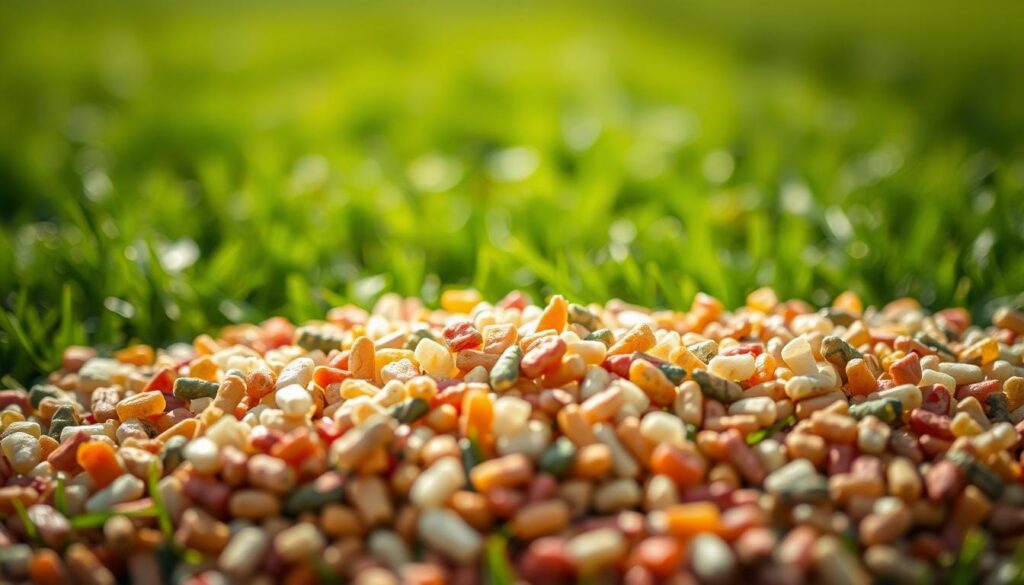
To achieve a healthy and vibrant lawn, understanding the basics of lawn fertilizers is crucial. Lawn fertilizers provide essential nutrients that promote healthy growth, improve color, and increase resistance to disease and pests.
Why Your Lawn Needs Fertilizer
Your lawn needs fertilizer to replenish the soil with vital nutrients that are depleted over time due to factors like weather conditions, soil type, and grass type. Without adequate nutrients, your lawn may become weak, thin, and more susceptible to pests and diseases. Fertilizers help to promote healthy root development, improve soil structure, and enhance overall lawn resilience.
The three essential nutrients that your lawn requires are nitrogen (N), phosphorus (P), and potassium (K). These nutrients work together to promote healthy growth and development.
The Critical Nutrients for Healthy Grass
Nitrogen is the most critical nutrient for promoting leaf growth and the lush green color that homeowners desire. It is a key component of amino acids, which are the building blocks of proteins. Nitrogen is essential for grass growth, and its deficiency can lead to weak and pale grass.
The N-P-K ratio on fertilizer packages indicates the percentage of nitrogen, phosphorus, and potassium in the product. For example, a 20-0-3 ratio means the fertilizer contains 20% nitrogen, 0% phosphorus, and 3% potassium. Understanding this ratio is crucial for selecting the right fertilizer for your lawn.
In addition to N-P-K, secondary nutrients like calcium, magnesium, and sulfur are also important for complete lawn nutrition. These nutrients support various physiological processes in the grass, including photosynthesis, root development, and stress tolerance.
Benefits of Do It Yourself Lawn Fertilizer
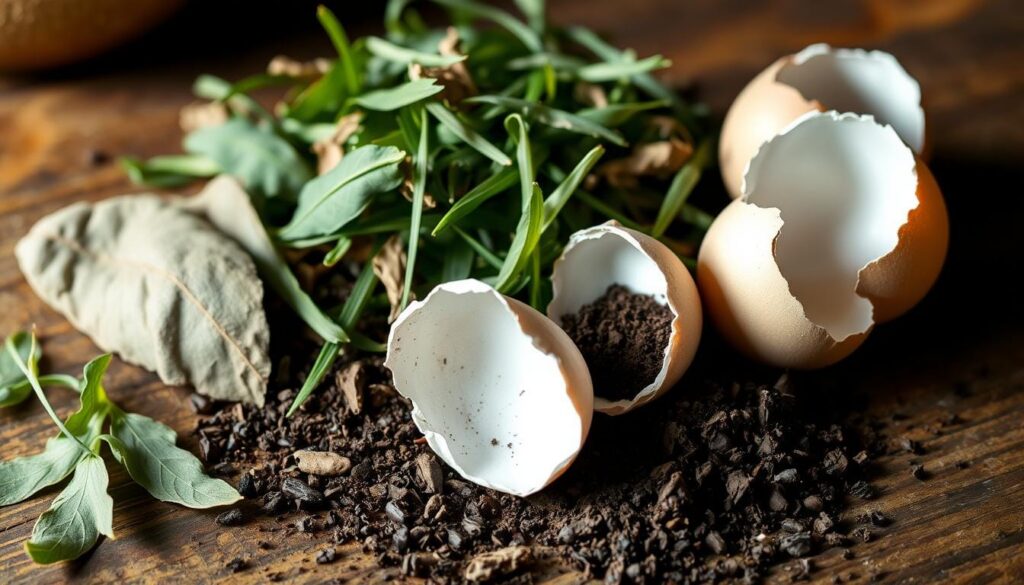
Creating your own lawn fertilizers at home can be a cost-effective and environmentally friendly choice. By adopting a DIY approach, homeowners can avoid the chemicals and unnecessary additives found in many commercial products.
Cost Savings vs. Store-Bought Options
One of the primary advantages of DIY lawn fertilizer is the potential for cost savings. Homemade fertilizers often utilize ingredients that are readily available at home or can be sourced cheaply, such as coffee grounds or grass clippings. This approach not only reduces waste but also eliminates the need for expensive store-bought fertilizers.
By repurposing household waste as fertilizers, homeowners can significantly cut down on their lawn care expenses. Moreover, the flexibility to adjust the composition of homemade fertilizers allows for a tailored approach to lawn nutrition, potentially leading to healthier grass with less financial outlay.
Environmental Advantages of Homemade Solutions
Homemade lawn fertilizers offer several environmental advantages. Properly formulated DIY fertilizers can reduce chemical runoff into local waterways, a significant concern associated with some commercial fertilizers. Additionally, homemade organic fertilizers improve soil biology and structure over time, enhancing the lawn’s natural ecosystem.
- Many DIY fertilizer ingredients are repurposed waste products, contributing to a circular economy.
- Natural fertilizers support beneficial soil organisms, improving soil health.
- Homemade fertilizers typically have lower salt indexes, reducing the risk of soil salinization.
By adopting a DIY approach, homeowners can contribute to a more sustainable home environment while maintaining a healthy lawn.
Essential Ingredients for Homemade Lawn Fertilizers
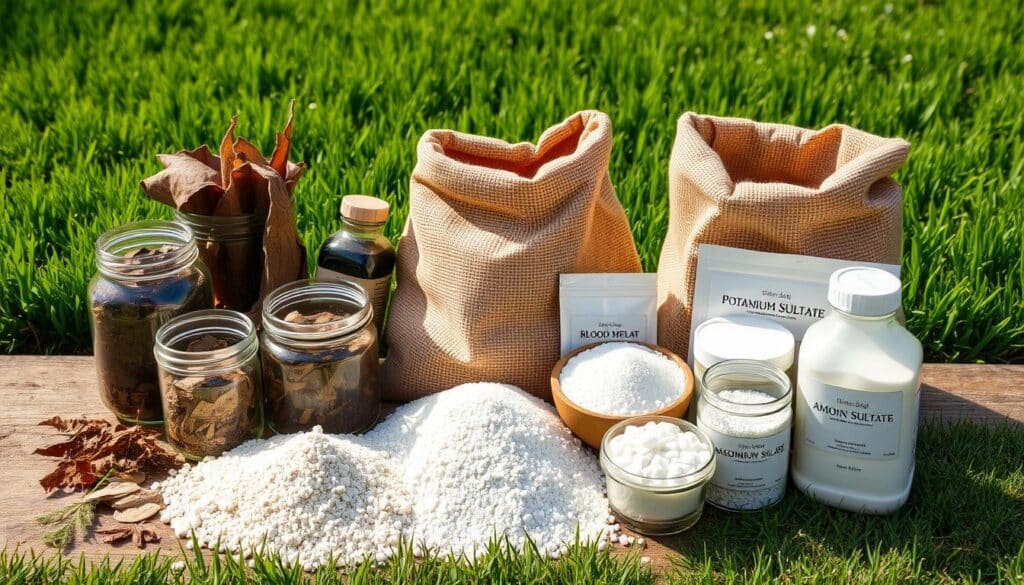
Understanding the vital ingredients for homemade lawn fertilizers is the first step towards achieving a vibrant, healthy lawn. Creating effective DIY fertilizers requires a mix of key nutrients that support overall lawn health.
Nitrogen Sources for Green Growth
Nitrogen is crucial for promoting green growth in lawns. Coffee grounds are rich in nitrogen, carbon, and other compounds that feed beneficial organisms in the soil. They also contain compounds that help suppress certain plant disease-causing microbes, making them a valuable resource for lawn care. Adding coffee grounds to your compost can significantly enhance its nutrient content.
Phosphorus and Potassium Components
In addition to nitrogen, phosphorus and potassium are essential for maintaining a healthy lawn. Phosphorus supports root development, while potassium helps with overall plant health and resilience. These nutrients can be sourced from various organic materials, ensuring a balanced fertilizer that promotes robust lawn growth.
Supplemental Nutrients and Additives
Beyond the primary nutrients, secondary and micronutrients like magnesium, sulfur, iron, and calcium can enhance DIY fertilizer effectiveness. Epsom salt provides magnesium and sulfur, supporting chlorophyll production. Molasses feeds beneficial soil microorganisms, while kelp meal or seaweed extract offers trace minerals and natural growth hormones. Humic acid improves nutrients availability and soil structure, and beneficial bacteria and mycorrhizal fungi enhance soil biology.
| Nutrient | Source | Benefit |
|---|---|---|
| Magnesium and Sulfur | Epsom Salt | Supports chlorophyll production and overall plant health |
| Trace Minerals and Growth Hormones | Kelp Meal or Seaweed Extract | Enhances grass resilience |
| Beneficial Microorganisms | Molasses | Feeds soil microorganisms, aiding in organic matter breakdown |
Top DIY Lawn Fertilizer Recipes
Revitalize your lawn with these homemade fertilizer recipes that promote healthy growth and vitality. Creating your own lawn fertilizers can be a cost-effective and environmentally friendly way to keep your grass looking its best.
Compost Tea Fertilizer
Compost tea is a liquid solution made by steeping compost in water, which extracts beneficial microbes that can help improve soil health and promote healthy grass growth. To make compost tea, you’ll need a 5-gallon bucket, some compost, and water. Steep 1-2 cups of compost in 5 gallons of water for 24-48 hours. Use this solution as a fertilizer by applying it to your lawn every 3-4 weeks during the growing season.
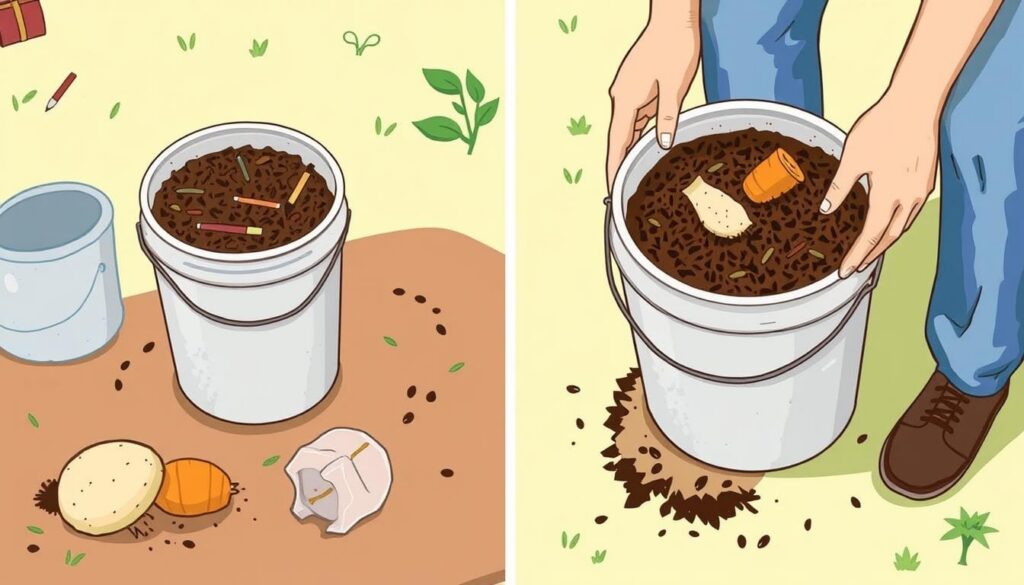
Coffee Grounds Solution
Coffee grounds can be repurposed as a lawn fertilizer due to their high nitrogen content. To make a coffee grounds solution, mix 1 cup of used coffee grounds with 1 cup of water to create a liquid fertilizer. You can also sprinkle the coffee grounds directly onto your lawn. This method is particularly effective for lawns with acidic soil.
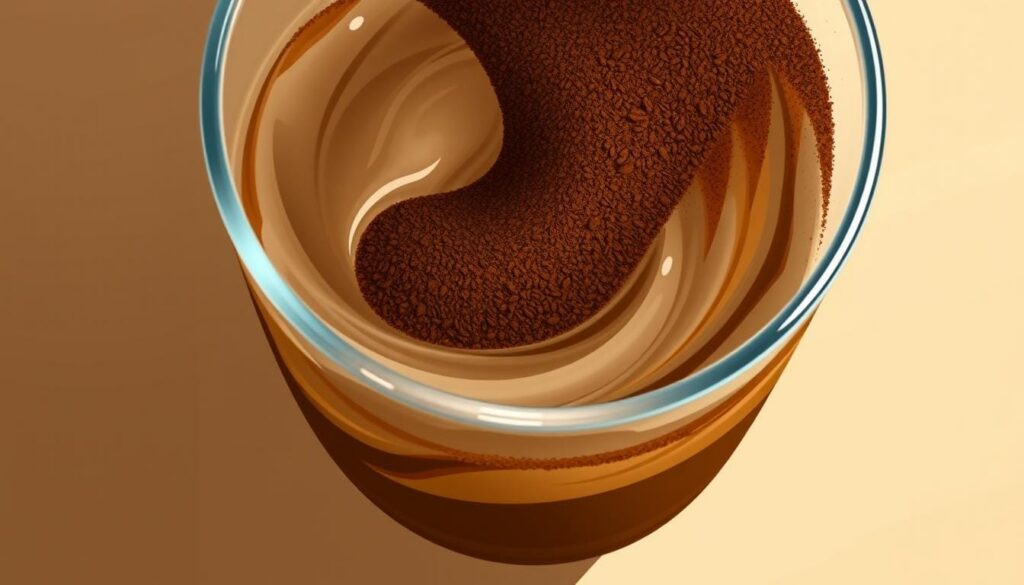
Epsom Salt Mixture
Epsom salt is rich in magnesium and sulfur, both of which are beneficial for plant growth. To create an Epsom salt mixture, dissolve 1 tablespoon of Epsom salt in 1 gallon of water. Spray this solution onto your lawn to provide your grass with these essential nutrients.
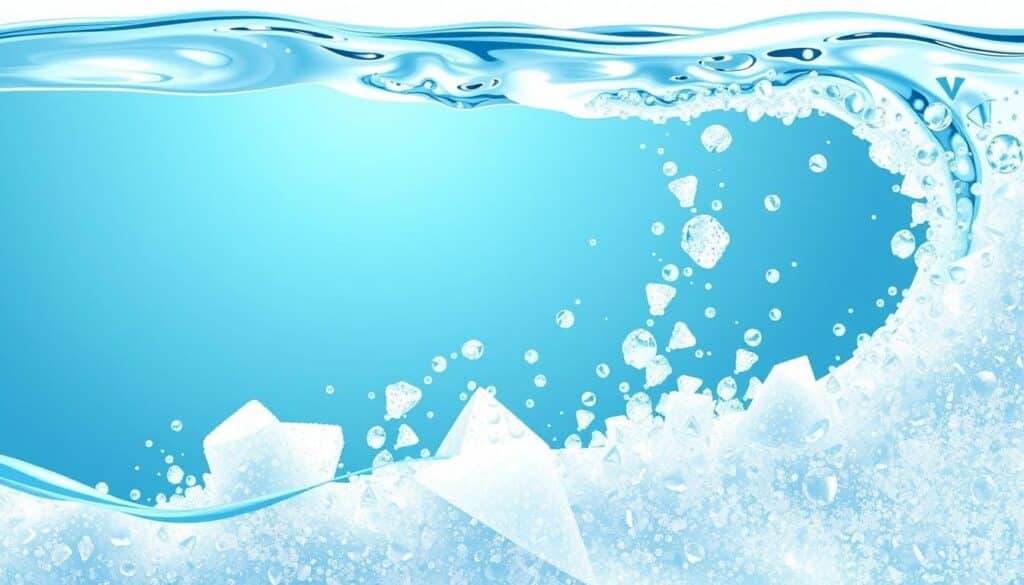
Grass Clippings Recycling Method
Recycling grass clippings is a simple and effective way to fertilize your lawn. After mowing, leave the clippings on the lawn to decompose and act as a natural fertilizer. This method not only reduces waste but also provides your lawn with essential nutrients like nitrogen.
Beer and Ammonia Tonic
This unique fertilizer recipe combines 1 (12 oz.) can of regular beer, 1 cup of children’s no-tears shampoo, and household ammonia. Mix the beer and shampoo in a 32 oz. hose-end sprayer jar, then fill the jar with ammonia. Set the dial to 3-4 oz per gallon and apply evenly over your lawn. The ammonia provides a quick nitrogen boost, while the beer adds sugars and micronutrients. The mild shampoo acts as a surfactant, helping the solution penetrate the soil more effectively.
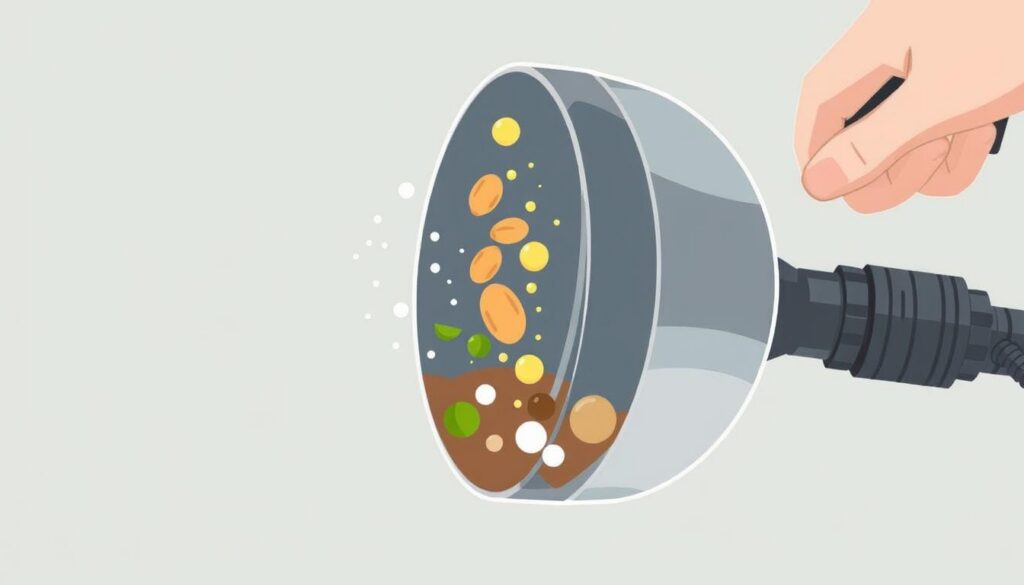
How to Apply Homemade Fertilizers Effectively
To get the most out of your DIY lawn fertilizers, proper application is key. This involves using the right tools, applying at the right time, and following the correct techniques to ensure your lawn receives the nutrients it needs.
Best Tools for Application
For effective application, you’ll need a reliable spreader or sprayer. When choosing a spreader, consider one that can handle the amount of fertilizer you’ve prepared.
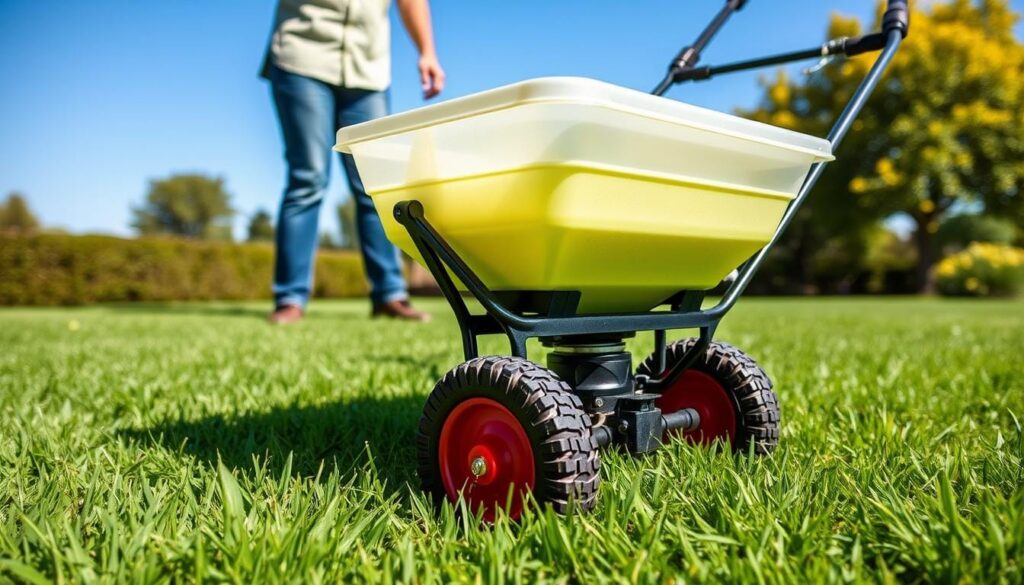
Timing and Frequency Guidelines
Before applying fertilizer, check the weather forecast to avoid waterlogging. It’s also advisable to mow your lawn a few days prior to fertilizing and water it if the soil is dry. This prepares your yard for optimal nutrient absorption.
Application Techniques for Maximum Benefit
Start by applying fertilizer around the lawn‘s perimeter, then move back and forth across the turf to ensure even coverage. It’s crucial to maintain a consistent walking speed and proper spreader settings to avoid streaking or burning. After application, water your lawn lightly to help the fertilizer soak into the soil. Be mindful of the amount of fertilizer used and avoid getting it on hard surfaces to prevent runoff.
For the best results, apply fertilizers during moderate temperatures, typically in the early morning or late afternoon. Also, consider dividing the total amount of fertilizer in half and applying it in perpendicular passes for an even distribution.
Potential Risks and Precautions
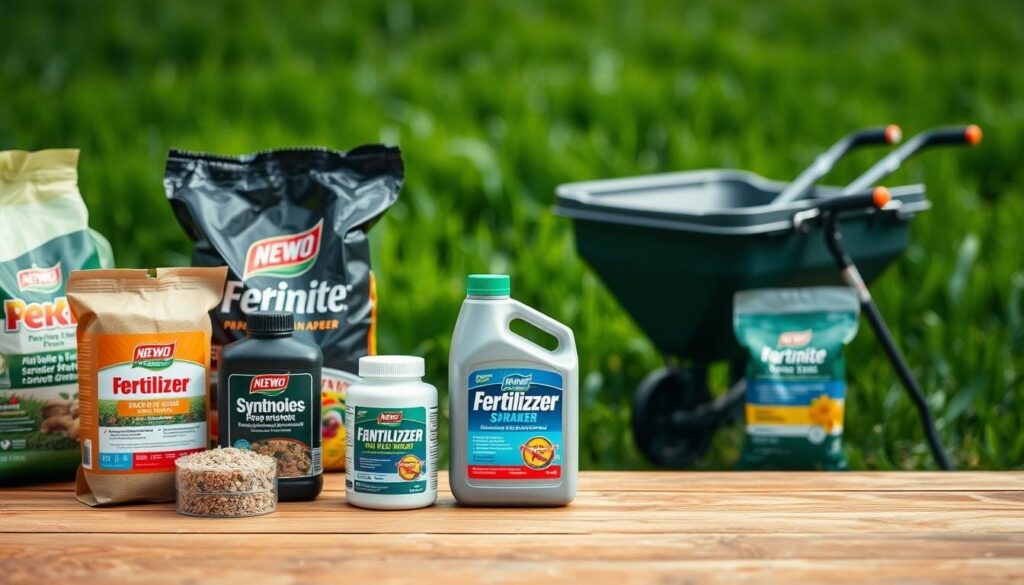
While DIY lawn fertilizers offer numerous benefits, their improper use can lead to significant risks. It’s essential to be aware of these potential hazards to ensure the health of your lawn and the environment.
Avoiding Lawn Burn and Damage
One of the primary risks associated with DIY lawn fertilizers is lawn burn. This occurs when too much fertilizer is applied, causing damage to the grass. To avoid this, it’s crucial to follow the recipe instructions carefully and ensure even application. Overfertilization can also lead to weakened grass, making it more susceptible to disease and pests.
Environmental Considerations
The environment is another critical area of concern when using homemade lawn fertilizers. Excess fertilizers can runoff into local water bodies, contributing to algal blooms and water quality issues. To mitigate this, it’s recommended to create buffer zones near water features and to apply fertilizers at the right time relative to rainfall and irrigation. Additionally, soil testing can help avoid applying unnecessary nutrients, and building healthy soil through organic matter can reduce the need for supplemental fertilizers.
Conclusion
With DIY lawn fertilizer recipes, you can promote healthy grass growth while saving money and protecting the environment.
Creating your own lawn fertilizer allows for customization to suit your lawn’s specific needs, ensuring optimal health and nutrients. The key benefits include cost savings, environmental advantages, and the ability to tailor fertilizer compositions.
By following the DIY approach and using the right ingredients at the right time, you can achieve a lush, vibrant lawn. Start with simple recipes and gradually experiment with more complex formulations as you gain confidence and knowledge.
Embracing DIY lawn care can be a rewarding hobby, resulting in a beautiful, healthy lawn while minimizing environmental impact.

